The Importance of Knowing How to Sweat Vegetables
Sweating is supposed to be something we do when we play sports. So what in the world does it have to do with cooking?
Sweating vegetables is a simple technique that builds flavor in countless recipes. This method gently cooks vegetables over low heat to release their natural sweetness and aroma without browning them.
It’s a foundational step in cooking that elevates dishes like soups, stews, sauces, and risotto. To sweat vegetables, start with a sturdy pan and a bit of fat like butter or oil. Add your chopped vegetables, such as onions, carrots, or celery, and cook them over low to medium heat.
Stir occasionally to prevent sticking and ensure even cooking. The goal is to soften the vegetables and coax out their moisture without creating a crust or caramelization.
This process unlocks deeper flavors while keeping the vegetables tender and aromatic. It’s especially useful in recipes with a smooth texture or a subtle, savory base. Sweating vegetables also makes blending into purees or sauces easier, enhancing both flavor and consistency.
Mastering this technique helps you create balanced, flavorful dishes. Whether you’re making a hearty soup or a delicate pasta sauce, sweating vegetables is a skill that takes your cooking to the next level. Let’s break it down step-by-step and bring out the best in your ingredients.
What exactly is sweating foods?
Sweating involves cooking food over low heat in a covered pan with a small amount of fat. This technique gently cooks vegetables or other ingredients until they release natural moisture. Cooks often use it to create a flavorful base for soups, stews, and sauces.
Sweating vegetables enhance their flavor by drawing out their natural sweetness and aroma. For example, sweating onions softens their texture and brings out their natural sugars, which you can later caramelize for a rich, savory taste.
Heat a small amount of fat—such as butter, oil, or bacon grease—to sweat vegetables in a heavy-bottomed pan over low heat. Add chopped or sliced vegetables and stir to coat them evenly in the fat. Cover the pan with a lid, and let the vegetables cook slowly. Stir occasionally to ensure even cooking. Over time, they will release moisture and become soft and translucent.
You can use sweating with various ingredients, including onions, garlic, celery, carrots, peppers, and leafy greens like spinach or kale. This method reduces bitterness in greens and creates a more delicate flavor, making it a versatile and essential cooking technique.
What are the advantages of sweating foods?
- Enhancing flavor: Sweating can help to enhance the natural flavors of vegetables and other ingredients by drawing out their sweetness and aroma. In addition, the slow cooking process allows the ingredients to release their natural juices, which can then be used to create a flavorful base for soups, stews, and sauces.
- Improving texture: Sweating can help to soften vegetables and other ingredients, making them more tender and easier to eat. This is particularly useful for normally tough or fibrous ingredients, such as onions or carrots.
- Creating a uniform texture: Sweating can help to create a uniform texture in dishes by breaking down the cell walls of vegetables and other ingredients. This can help to create a smoother, more consistent texture in dishes like soups and stews.
- Reducing bitterness: Sweating can help to reduce the bitterness of certain vegetables, such as leafy greens like spinach or kale. By cooking them slowly over low heat, the bitterness can be reduced and the flavor can become more delicate.
- Saving time: Sweating can be a time-saving technique because it can be done in advance. By sweating vegetables ahead of time, you can prepare a flavorful base for a dish and save time when it comes to actually cooking the dish.
Sweating is a simple but versatile cooking technique that can help to enhance the flavor, texture, and overall quality of a wide range of dishes. It’s a technique often used by professional chefs and is also a valuable tool for home cooks who want to take their cooking to the next level.
Where Sweating Foods Is Useful
Sweating is a valuable technique that can be applied to a variety of ingredients in cooking. Here are some examples where sweating is commonly used:
- Onions: Sweating onions is common in many dishes, such as soups, stews, and sauces. Their natural sugars are drawn out by cooking onions slowly over low heat, creating a sweet and savory flavor.
- Garlic: Sweating garlic is helpful in many dishes where garlic is used as a base flavor. Cooking garlic slowly over low heat can become tender and mellow, enhancing its flavor in the dish.
- Vegetables for soup: Sweating vegetables, such as carrots, celery, and onions, is a common technique to create a flavorful base for soups. Their natural sweetness and flavors are drawn out by simmering the vegetables over low heat, creating a rich and hearty broth.
- Peppers: Sweating peppers is a technique that can soften the texture and enhance the flavor of the peppers. This technique is commonly used in dishes such as chili, where peppers are a key ingredient.
- Leafy greens: Sweating leafy greens, such as spinach or kale, can help to reduce their bitterness and create a more delicate flavor. This technique is commonly used in quiches, frittatas, and casseroles.
Steps to Sweating Vegetables
- Dice or chop onions, carrots, and celery to roughly ¼” pieces. The more uniform your pieces, the more evenly they cook, so dicing is preferable to chopping.
- Mince garlic and/or shallot.
- Heat a pan over medium-low heat until hot.
- Add a small amount of oil (no more than two tablespoons) to the pan and swirl to coat.
- Let the oil heat for a few seconds.
- Add the diced vegetables to the pan and a healthy salt pinch. The salt will help to draw out water from the vegetables.
- Adjust the heat so you can only hear a gentle sizzle. You should not hear loud sizzling or popping; if you do, turn down the heat to maintain the gentle sizzle.
- Stir the food frequently—remember, you don’t want to brown it, so keep it moving.
- Add the minced garlic and/or shallot (if using), and continue to cook and stir.
- Once the vegetables are softened and translucent, after about five to ten minutes, you are finished with the sweat and can continue with the recipe.
Some of My Favorite Cooking Techniques

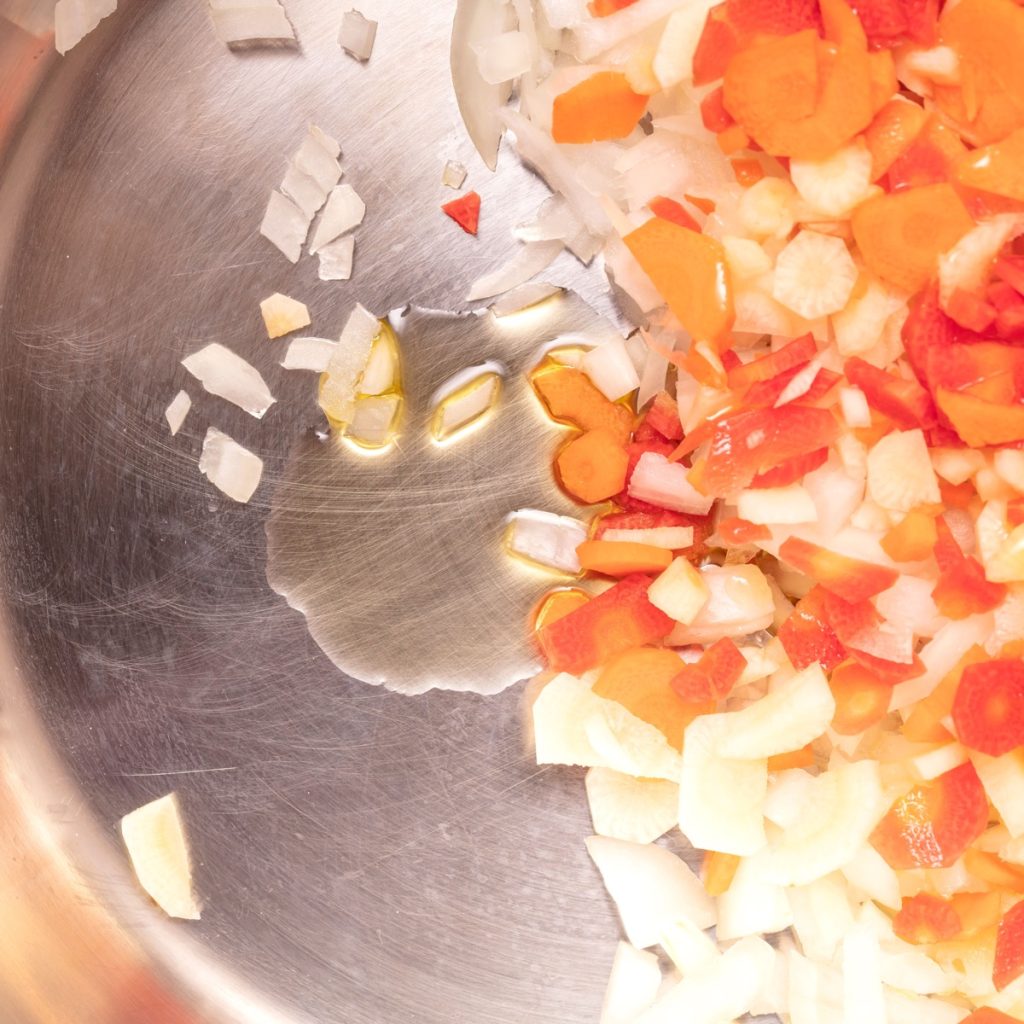
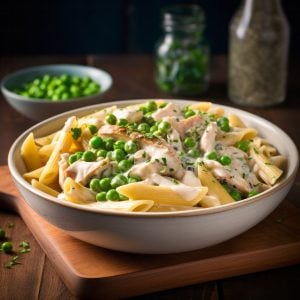
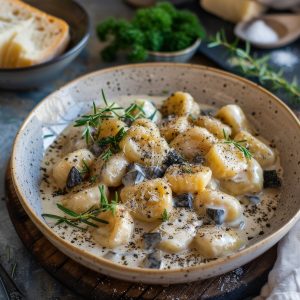


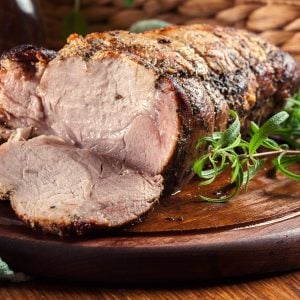
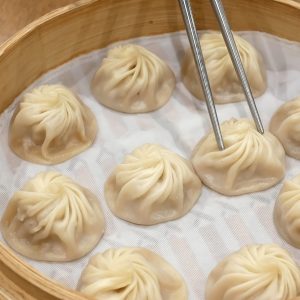
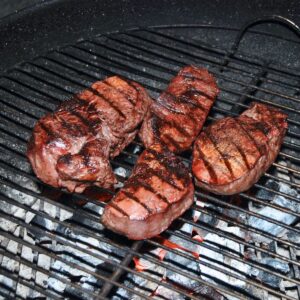
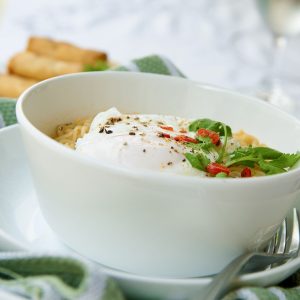
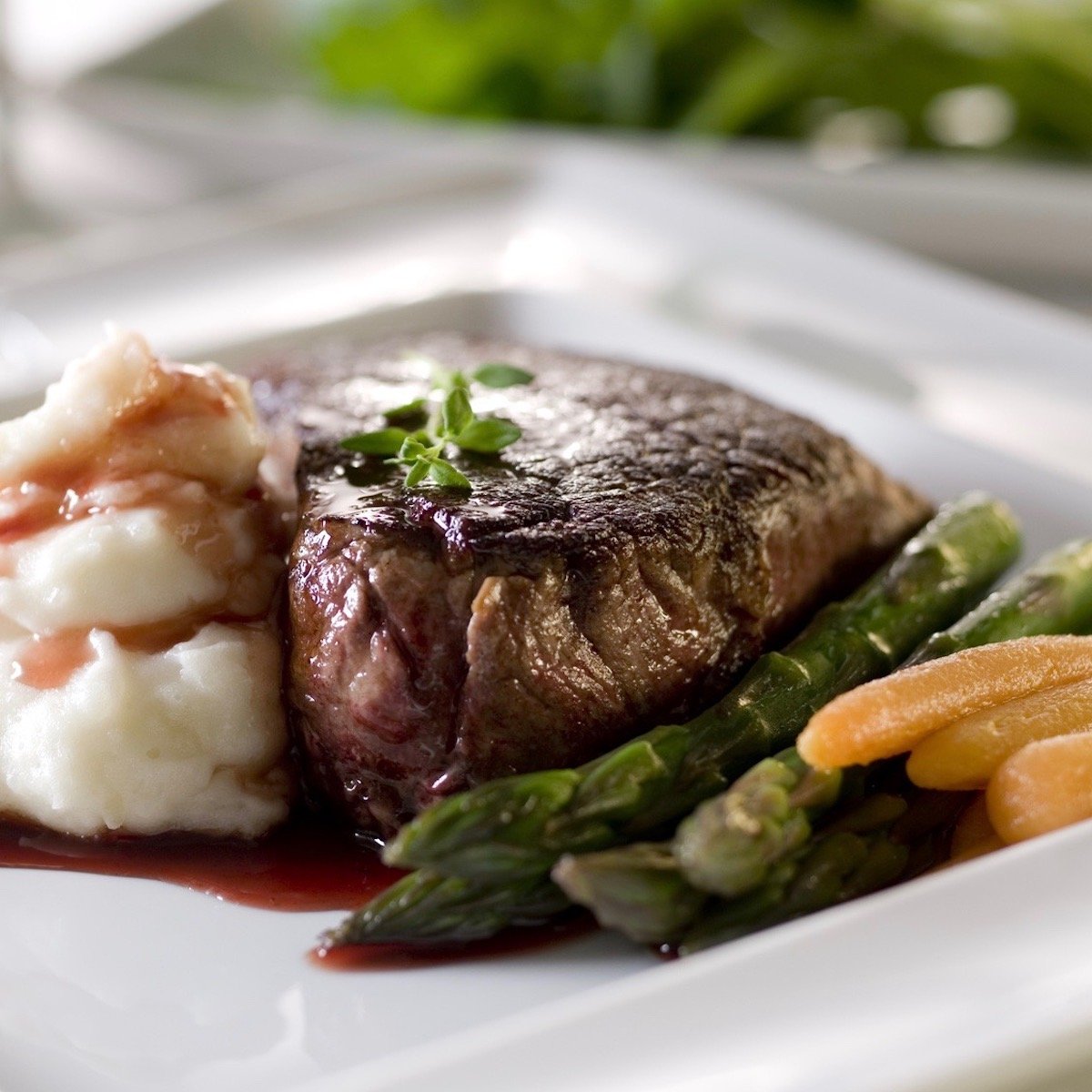
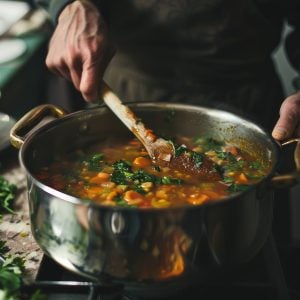
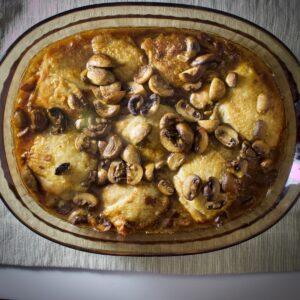
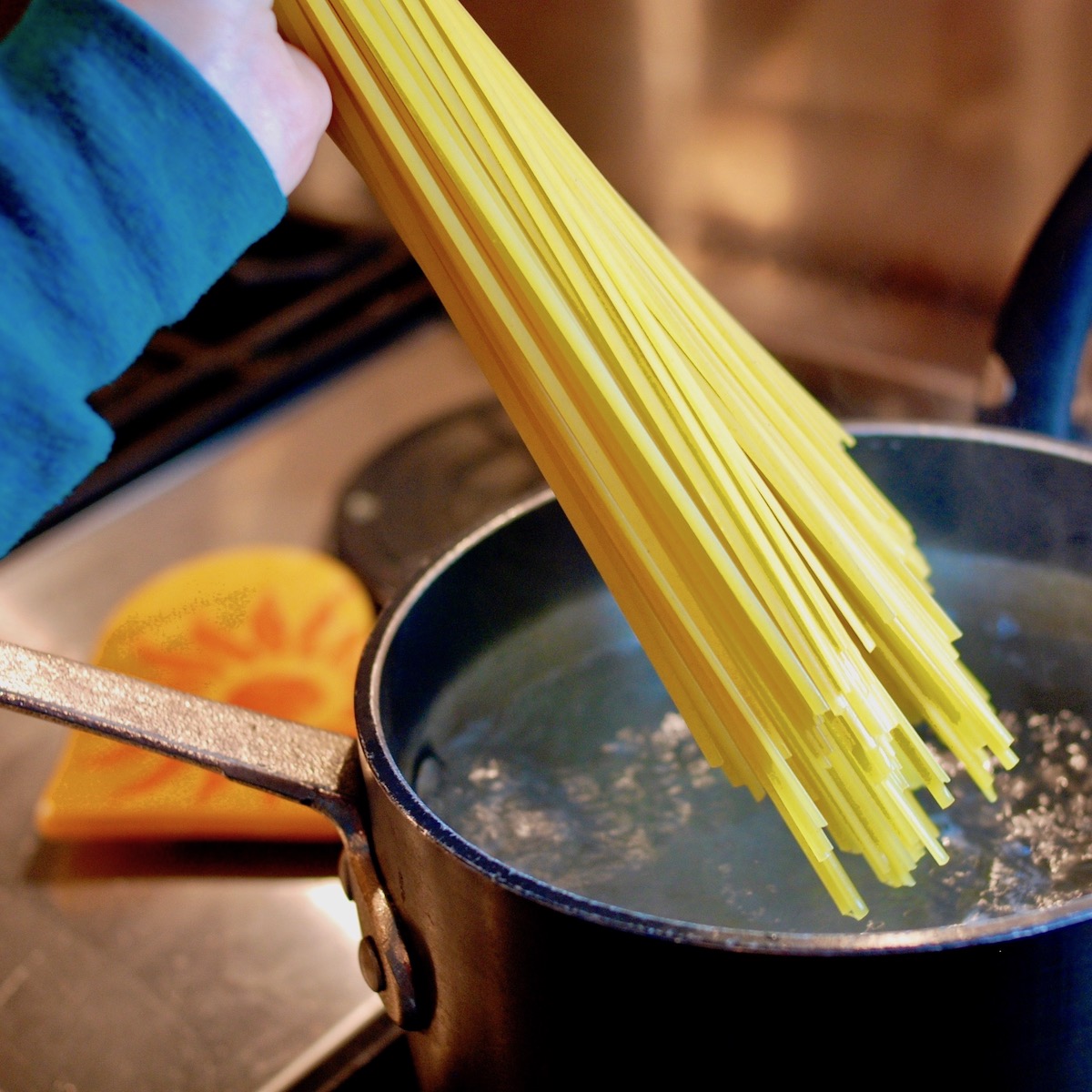


17 Responses
Sweating is another cooking fallacy. If you are cooking something for a long period of time such as stew or soup. There is no need to sweat vegetables. Throw them in the pot.
How about spaghetti then? Sweat the onions, garlic and peppers with a bit of oil and some salt and pepper, and let the mushrooms soften up in some butter, allowing the flavors to blend and sweeten up, or just dump them in the pot with the sauce? I tried both and it’s way better to take the five minutes and sweat down the veg first. Otherwise you miss the melllow sweetness that adds depth and dimension to the sauce.
well said poutine. i always sweat when adding vegetables to pasta sauce. not doing so makes for a weaker sauce. and chopped garlic should always sweat in oil prior to meat, sauce, etc to flavor the oil prior to cooking the main course.
I thought maybe your comment, ‘Know It All’ was a fallacy. You can throw it all in the pot ie: brkfst lunch and supper if you like but the object here is to discuss the art and craft of cooking as in to sweat or not to sweat – and I prefer to.
Thanks for the scientific explanation Stephen
What about if I want them in an omelet?
Not if you want to soften and flavor them up for a puree’.
Thank you for this explanation. I always sweat my vegetables before putting them in my soups, chili and stews. I didn’t know why, I just did it. Now I know why I do it.
Another good way to sweat the veggies, especially garlic, score the veggies, if garlic with/without the skin, place in a small pan, oven safe of course, place the heat to a low setting, temp depends on what you still may have to prep still. And wait until the desired softness use juice and all, perfect for a quick marinade or even long processes.
Hi G.
You don’t mention two things that I find really useful. Unsalted butter rather than oil because of residues and using a lid to keep things like onions clear. You can also use a little white wine as a moisturiser.
Hi Tim, thank you for your comments. I have always sweated my vegetables with the lid off but your comment makes a lot of sense so I’m going to do some research and adjust my technique if necessary. I also like your suggestion of using unsalted butter, but I think for most home cooks, the residues would not be a factor.
I agree with @Poutine: Sweated veggies are nicer. I think sweating vegetables is sort of a half-way step between poaching (using a fair amount of water) and sauteing them. Poaching only softens and extracts; sweating softens and extracts AND does a mild chemical change (as in Maillard reaction and caramelization). Anyone like to (dis)agree?
Nope, I agree about the flavor of sweated vegetables. There are just some occasions where a dish calls for poaching for different results.
I’m preparing leeks to make Potato-Leek soup. A tip in my recipe book states that the leeks need “a good sweat.” I have never heard of sweating vegetables but as with Kathryn Brown I’ve always done it and didn’t know why. I didn’t know it had an official name! I always thought I was sautéing. Thx for the explanation!
I was taught that in the ‘classic’ sense a sweat was when a piece of waxed paper was cut to size to fit snugly around the bottom of the pan, was coated w/a thin coat of butter then placed down on the vegetables to start the release of moisture. The pan was covered to control the moisture lose as browning was the last thing one wanted here. I assumed this procedure was to cook the vegetables without any browning as the end use would be a lighter sauce or soup.
& De-glaze the pan with reisling!!
Hello. Thank you for always good blog.
You are welcome Ryann.